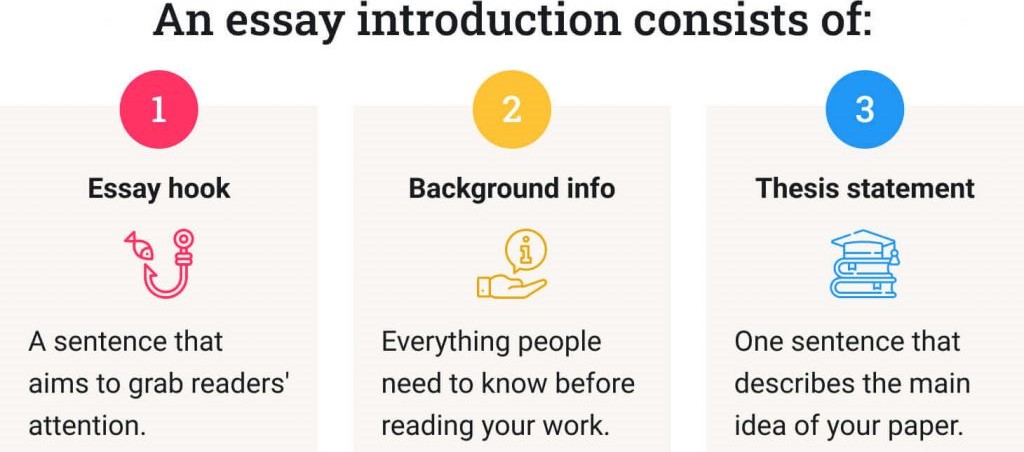In the world of academic writing, a strong introduction is paramount. It sets the stage for the entire essay, offering the reader a glimpse into the ideas and arguments to come. This is especially true for nursing essays, where the stakes are high. A strong nursing essay introduction is not just about presenting information. Instead, it conveys your understanding of complex healthcare concepts, your critical thinking skills, and your passion for the profession.
A captivating nursing essay introduction is the key to making a lasting impression on your reader, ensuring your essay is read with interest and evaluated with attention. This guide offers insights, with examples to enable you craft a captivating nursing essay introduction.
Understanding the Importance of a Strong Essay Introduction
The nursing essay introduction is your first opportunity to demonstrate your knowledge and engage your audience. It's a chance to showcase your unique voice, articulate your thesis statement, and pique the reader's interest in the topic at hand. A weak introduction can leave your reader indifferent, while a strong one can set the tone for a compelling and impactful essay.

The Elements of a Captivating Nursing Essay Introduction
A truly captivating nursing essay introduction possesses several key elements:
- Hook: This is the opening sentence or paragraph that grabs the reader's attention and compels them to continue reading. It can be a striking statistic, a thought-provoking question, an anecdote, or a compelling statement.
- Background Information: Briefly introduce the relevant context of your topic. This could be historical background, relevant statistics, or a general overview of the issue.
- Thesis Statement: Your thesis statement is the central argument of your essay. It should be clear, concise, and directly answer the essay prompt.
- Roadmap: Provide a brief outline of the main points you will discuss in your essay. This guides the reader through your argument and helps them follow your train of thought.
Crafting a Hook: Different Approaches to Captivating Your Reader
The hook is the cornerstone of your nursing essay introduction. It's your chance to create an instant connection with your reader and make them eager to learn more. Here are some effective strategies for crafting a compelling hook:
- Start with a Statistic: A striking statistic can immediately highlight the significance of your topic. For instance, "Every year, millions of people around the world suffer from preventable healthcare-associated infections."
- Pose a Thought-Provoking Question: Engaging the reader with a question can spark curiosity and encourage critical thinking. For example, "Can nurses truly advocate for their patients while navigating complex healthcare systems?"
- Share a Relevant Anecdote: A brief anecdote can personalize your topic and make it relatable. Consider sharing a personal experience, a story from your clinical practice, or a real-life case study.
- Make a Bold Statement: A strong declaration can grab attention and assert your position. For instance, "The role of the nurse is evolving, and embracing technology is essential for delivering high-quality care."

Providing Context: Setting the Stage for Your Argument
Once you've captivated your reader with a hook, it's time to provide some context for your topic. This helps your reader understand the background of your argument and appreciate the significance of your chosen theme.
- Historical Background: If your essay explores a specific historical development in nursing, briefly outline the relevant history.
- Relevant Statistics: Provide a few key statistics that illustrate the importance of your topic.
- General Overview: Offer a concise overview of the issue at hand, outlining the main points and their relevance to your essay.
Articulating Your Thesis Statement: The Heart of Your Introduction
Your thesis statement is the central argument of your nursing essay. It's the main point you will be arguing throughout the essay, and it should be clearly stated in your introduction.
- Clear and Concise: Your thesis should be easy to understand and directly answer the essay prompt.
- Specific and Focused: Avoid vague or general statements. Make your thesis specific and focused on the specific argument you will be developing.
- Debatable: Your thesis should present an argument that can be debated or challenged. It should not simply state a fact or offer a general opinion.

Mapping Out Your Argument: A Roadmap for the Reader
After introducing your topic and thesis statement, it's helpful to provide a brief roadmap for your essay. This helps the reader anticipate the main points you will be discussing and follow your argument more easily.
- Mention the Key Points: Briefly mention the main topics you will be exploring in your essay.
- Logical Flow: Ensure the order of your points is logical and follows a clear progression.
- Keep it Concise: The roadmap should be brief and to the point, without providing detailed information.
Common Mistakes to Avoid in Your Nursing Essay Introduction
A strong nursing essay introduction is crucial for setting the tone and engaging your reader. However, even experienced writers can fall prey to common mistakes that undermine the effectiveness of their introduction. Here are some pitfalls to avoid when crafting your nursing essay introduction:
1. Being Too General:
While it's important to establish a broad context, your nursing essay introduction should be focused and relevant to the specific topic of your essay. Avoid vague or general statements that don't directly connect to your thesis. For instance, instead of starting with "Nursing is an important profession," delve into the specific aspect of nursing you're addressing: "The role of the nurse in managing chronic pain is increasingly complex due to..."
2. Introducing Too Much Information:
Keep your nursing essay introduction concise and avoid overwhelming your reader with too much background information. Focus on providing just enough context to set the stage for your argument without distracting from your main point.
3. Failing to State Your Thesis Clearly:
Your thesis statement is the heart of your nursing essay introduction. It should be clear, concise, and easy to understand. Avoid ambiguity or leaving the reader guessing about your main argument. For example, instead of stating "This essay will discuss patient advocacy," state your specific argument: "Nurses have a vital role in advocating for patient autonomy within the healthcare system by..."
4. Using Clichés or Overused Phrases:
Choose original language and avoid relying on overused clichés or generic phrases. Instead of stating "Nursing is a challenging but rewarding career," try using more specific and compelling language: "Navigating the emotional and physical demands of nursing requires resilience and compassion, qualities that are... "
5. Ignoring the Essay Prompt:
Make sure your nursing essay introduction directly addresses the essay prompt and aligns with the specific instructions given by your professor. Ensure your introduction clearly indicates your understanding of the assigned topic and your approach to analyzing it.
6. Writing a Weak Hook:
A captivating nursing essay introduction starts with a strong hook that grabs the reader's attention. Avoid generic hooks or simply stating a fact. Instead, try using a surprising statistic, a thought-provoking question, a relatable anecdote, or a bold statement.
7. Not Providing Context:
While your hook should be engaging, it's also important to provide context for your topic in your nursing essay introduction. This helps your reader understand the background of your argument and appreciate the significance of your chosen theme. Briefly introduce relevant historical background, statistics, or a general overview of the issue.
8. Neglecting the Roadmap:
After introducing your topic and thesis statement, consider providing a brief roadmap for your nursing essay. This helps the reader anticipate the main points you will be discussing and follow your argument more easily. Briefly mention the key points you will be exploring in your essay, ensuring a logical flow and keeping it concise.
9. Failing to Proofread:
Ensure your nursing essay introduction is free of grammatical errors and typos. A careless mistake can undermine your credibility and distract the reader from your argument. Take the time to proofread carefully and ensure your introduction is polished and professional.
By avoiding these common mistakes, you can write a strong nursing essay introduction that effectively sets the stage for your argument and engages your reader. Remember, a strong start is essential for making a lasting impression on your audience and achieving academic success.
Examples of Captivating Nursing Essay Introductions
Here are some examples of effective nursing essay introductions:
- "Imagine a world where a simple, preventable error leads to a patient's death. This heartbreaking scenario is a stark reality in hospitals around the globe. Healthcare-associated infections are a major public health threat, and nurses are on the frontlines in preventing this devastating problem." (This introduction uses a thought-provoking scenario and a statistic to engage the reader.)
- "The relationship between nurse and patient is fundamental to the healing process. But how can nurses truly advocate for their patients in a system often driven by financial concerns and bureaucratic complexities?" (This introduction poses a compelling question and highlights the complex nature of nursing practice.)
- "In the aftermath of the COVID-19 pandemic, the nursing profession is at a crossroads. With growing demand for healthcare services, nurses are facing immense pressure and burnout. However, this challenging context presents an opportunity for innovation and reform in nursing education and practice." (This introduction uses a relevant historical event and connects it to the future of the nursing profession.)
Tips for Writing a Captivating Nursing Essay Introduction
- Write Your Introduction Last: After completing the main body of your essay, revisit your introduction and refine it to ensure it accurately reflects your argument and engages your reader.
- Read Aloud: Read your introduction aloud to yourself to identify any awkward phrasing or unclear sentences.
- Get Feedback: Ask a classmate, friend, or tutor to read your introduction and provide feedback.
- Proofread Carefully: Ensure your introduction is free of grammatical errors and typos.

The Importance of a Strong Start
The nursing essay introduction is a crucial part of your essay, setting the stage for your argument and captivating your reader. By mastering the art of the nursing essay introduction, you can ensure that your essay is read with interest and evaluated with attention. Remember, a strong start is essential for making a lasting impression on your audience and achieving academic success.
Get Custom Nursing Essay Writing Help
At Exemplary Dissertations, we can help you with writing a stellar nursing essay introduction, body and conclusion that instantly gets your readers hooked. Our service also covers proof reading and editing, and plagiarism removal. Besides, we also provide professional assistance for writing nursing research papers, case studies and dissertations.